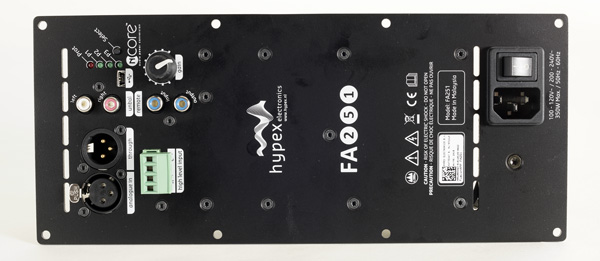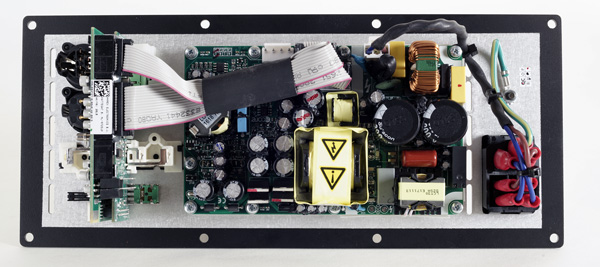ScanSpeak subwoofer
26W/4558T00-26W/0-00-00
Hypex FA251 plate-amp/DSP
ScanSpeak subwoofer
30W/4558T00-30W/0-00-00
Hypex FA501 plate-amp/DSP
Download pdf:
Speaker Kit 10" from Jantzen Audio
Speaker kit 12" from Jantzen Audio
Copyright 2020 © Troels Gravesen
Go to on this page:
DRIVERS
CABINET PLATE-AMP
SPEAKER TEST
12-inch version
As you may have noticed, no subwoofers have ever been published on these
pages and the aim of this project is to supplement a pair of smaller
or bigger speakers with subwoofer(s).
Quite often we see people buying a pair of
very small speakers in the 3-6 liter range due to high-WAF or other
preferences. Next we see a subwoofer tucked
away up against the wall or in corners in order to help
in the 30-100 Hz range. This may not exactly turn a mini into a maxi,
and the minis not having a high-pass filter really
can't be played louder than before.
There's a lot of energy in the 100-200 Hz range and neither the sub, nor
the satellites handles this frequency range very well. We have a dynamic
hole between the two, but a subwoofer may create an acceptable ooumph in
the low range and for some that's enough. To have a better dynamic
presentation we may need at least a 6" bass driver in the main speakers,
maybe even an 8" driver, but time will tell, because I'm going to mate
these subs with my
Discovery W12,
Ellam 98 mkII
and AudioTechnology
3-Way Classic and hear what happens going from around 50 to 100 and
up to 200 cm^2 membrane area for the main driver.
Otherwise there's nothing new under the sun here: A subwoofer featuring the well-known ScanSpeak 26W/4558T00 driver and the plate amp Hypex FUSION FA251 (for 10" version) or FA501 for the 12" version. Google the driver and you'll find a lot of applications. From my google search I find discussions on the significance of 22 mm versus 26 mm cone excursion, but these people are talking earthquake movie set-ups and large rooms. Not what I'm aiming at here, rather a decent response down to 30 Hz for general hifi application. Subwoofers and plate amps have been around for a long time and subwoofers even has a dedicated website, http://www.diysubwoofers.org
So, kindly sponsored by ScanSpeak, I got two 26W/4558T00 drivers and I
ordered a pair of Hypex FUSION FA251/FA251 plate-amps.
Modeling the 26W sub soon makes it clear we're not going to use a ported cabinet. We need a decent port diameter and the port is going to be too long. Making a slotted port soon adds one third to cabinet volume, so this was given up also. Using a passive radiator is basically the same as a port, only does not take up much volume. Downside of passive radiators is cost, but we do pay dearly in many other areas to reduce volume.
Subwoofers are rarely very sensitive, often 83-86 dB/2.8V but as we place them close to the front wall or even in corners we get some 3-9 dB room-gain, hence suitable for most main speakers. From simulation seen below you can see the impact of having the 26W some 30 cm off the floor, some 50 cm from the front wall and 180 cm to side walls. We get some 4-6 dB room gain, sometimes even more of in corners. If we didn't have room gain, many speakers would sound rather lean, even from an 8" bass driver. The tricky part for any loudspeaker constructor is to voice the speaker taking into account an estimated average room gain contribution in the low range, maybe except for very small speakers were we really do not expect much bass at all. Some people are disappointed from their 6" bass driver, which may have a decent sensitivity of e.g. 88 dB, but placed on a narrow baffle and into the room, it looses a lot of low-end power due to baffle step loss and lack of room gain.
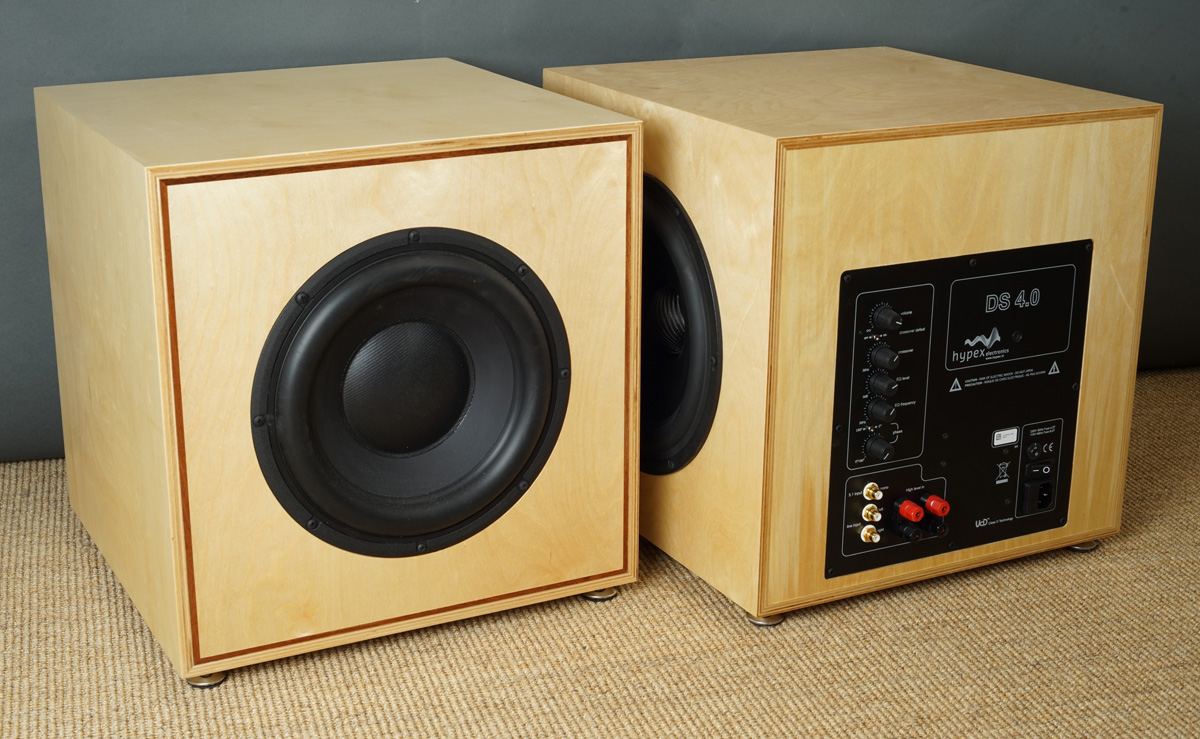
Pay notice the plate-amp has changed from DS 4.0 to FA251/FA501 since
first construction.
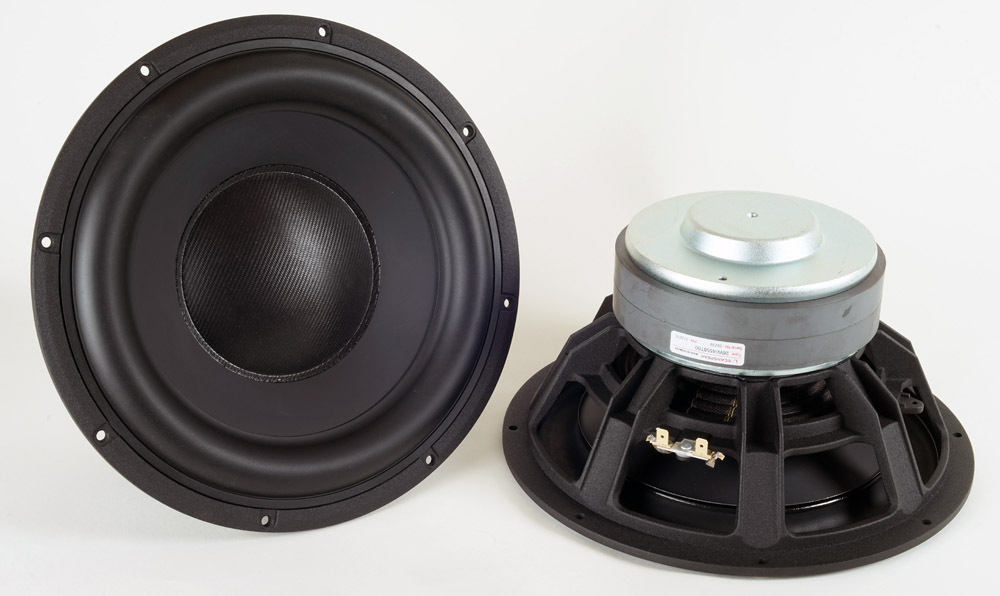
26W/4558T00 subwoofers. Click image to view large
Download driver specs here.
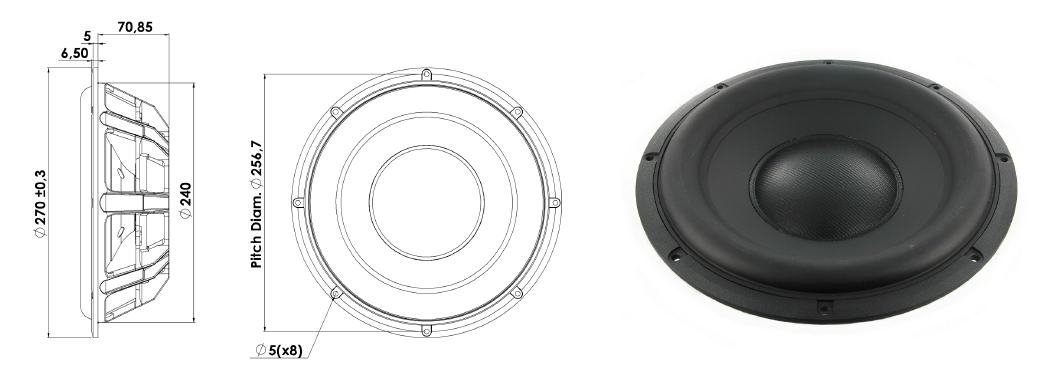
ScanSpeak passive radiator 26W/0-00-00, download spec
here.
Passive radiators kind of falls into two groups, those for general hifi
aiming at 30-40 Hz bass extension and then dedicated subwoofer passive
radiators where we are talking moving mass of 4-500 grams. Here almost 4
times the moving mass of the subwoofer unit. We're talking deep bass
from small cabinets and the price to pay is efficiency.
Generally passive radiators deliver a little less bass extension
compared to ported systems and a little steeper roll-off. In return
better bass definition and transient response like a closed system.
As always in hifi, some people love them, others hate them, nothing
different from ported systems.
Passive radiators are certainly not cheap compared to a plastic tube in
a ported design, but a port doing the same here as the passive radiator
takes up considerable volume. A 12 cm port diameter here would be a
little less than 1 meter long, a chimney! Seriously low-WAF!
Download manual here: FA251
Download HYPEX FUSION manual
here.
Download Hypex Filter Design
here.
Go to page 31 to read about the FUSION
modules.
Download Hypex Filter Design 4.9nnn latest software from
Hypex website.
Download
software for FA251
Go to Hypex software illustration.
Go to FA251/501 page for more info.
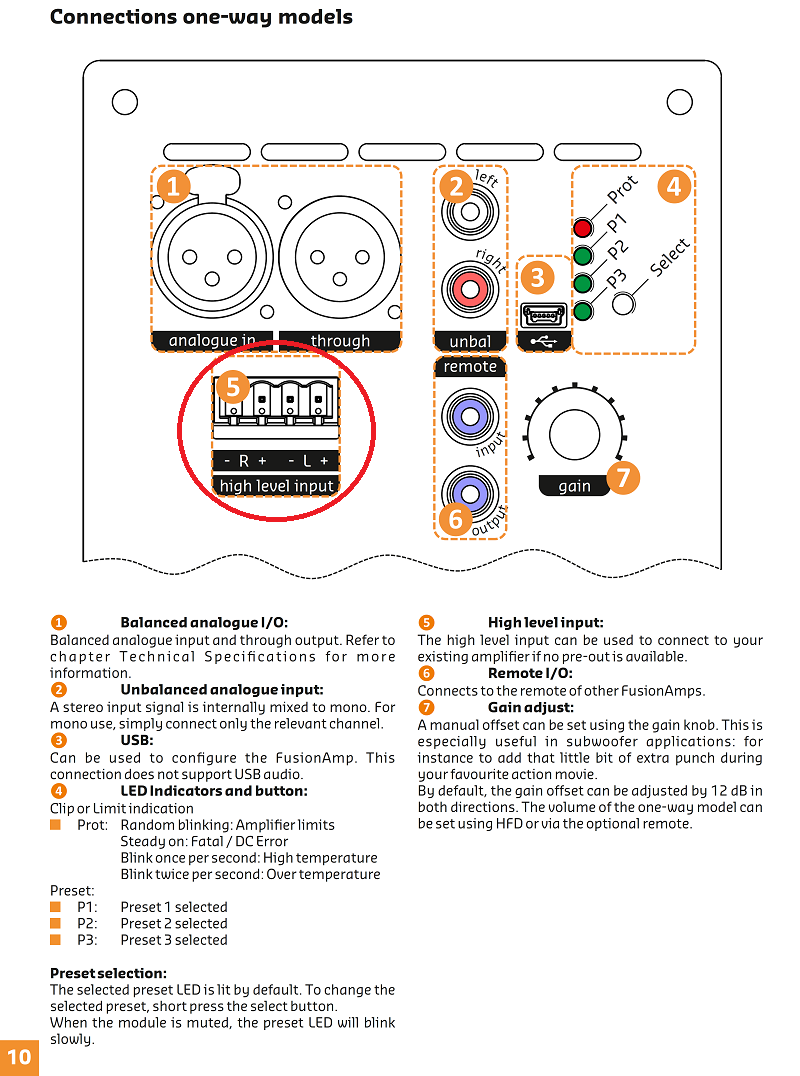
On page 10 you find the FA251 and you use the red encircled connectors
for your high-level input (from speaker cables). Or if your preamp has a
line out, you can connect the module directly via phono cables.
Install Hypex Filter Design on your PC and make an e.g. 4th order slope
at e.g. 50, 70 and 90 Hz for the three pre-sets. There are numerous
options here in terms of slopes and point of crossover.The page here
goes for FA251 as well, same procedure in programming:
http://www.troelsgravesen.dk/Hypex-FUSION_FA252.htm
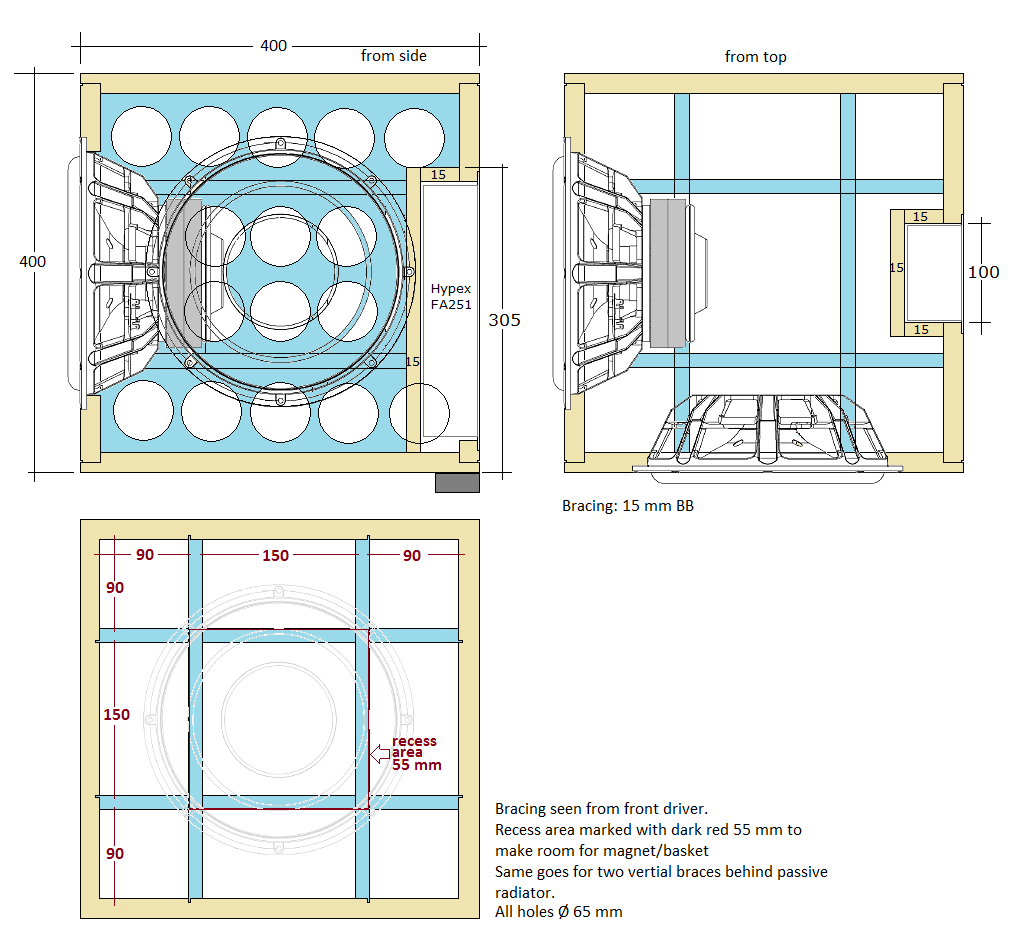
My test cab was actually a little larger than these, 43x43x43 cm to make
50 L net volume for experimentation.
My final cabs will be 40 x 40 x 40 from 20 mm Baltic birch, heavily
braced.
The compartment for the plate amp takes up some 2 liters, but damping
materials add to virtual volume, so ~50 litres.
I used approx. 0.5 sqm of egg crate foam to dampen the cabinet.
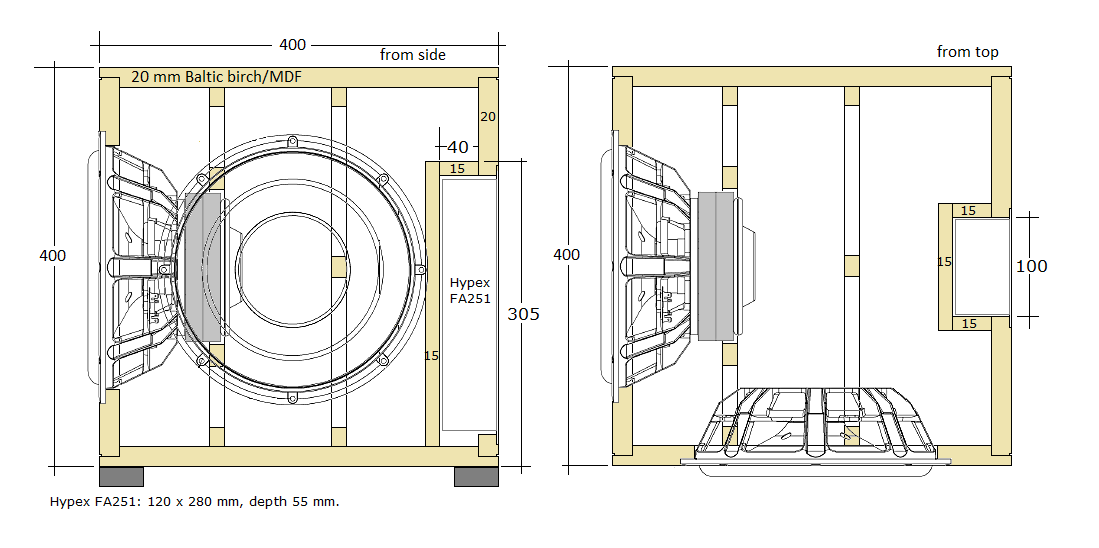
Cabinet kits available from Ebelholz, Germany:
https://www.ebelholztechnik.de/galerien/index.php/category/364-scan_speak_sub_26w
Box simulation vented
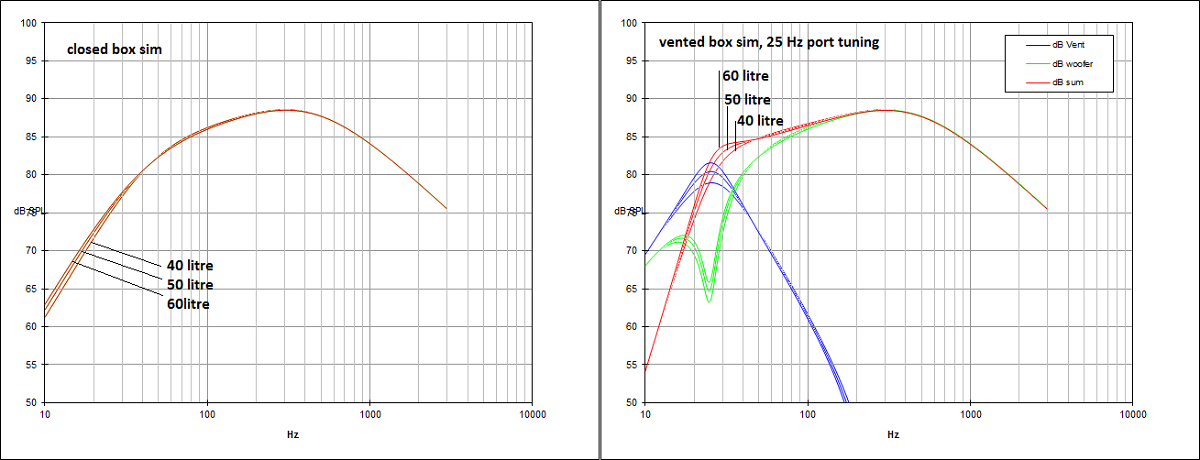
Above simulation of response from closed and ported enclosures @ 40, 50
and 60 litres.
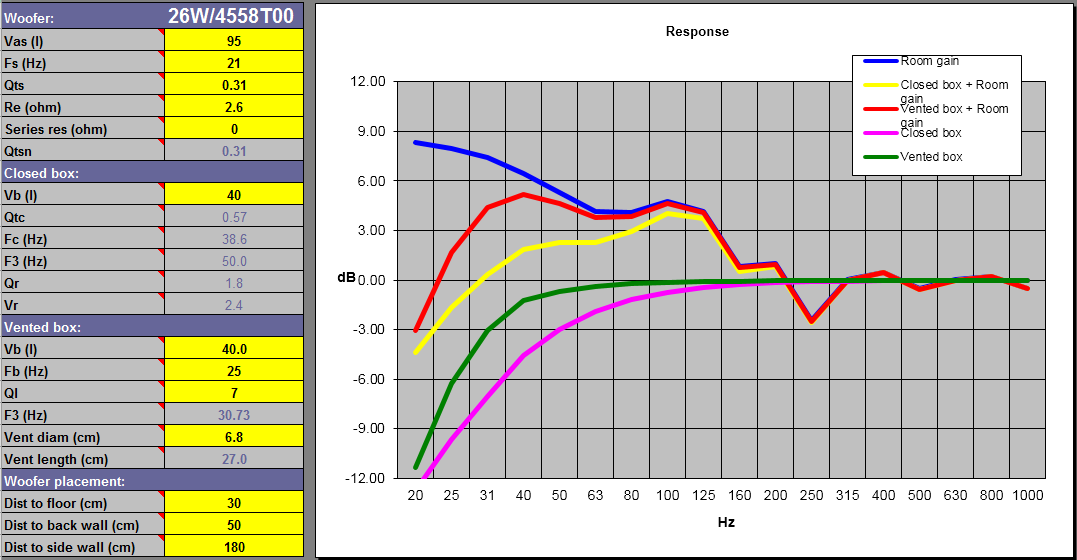
What has to be taken into account when dealing with subwoofers, is the room-gain. The room is an amplifier and adds to the low end response as can be seen from above from placing the driver 50 cm from front wall, 30 cm from the floor and 180 cm from side walls. We get some 4-5 dB extra from such placement. The reason a lot of subwoofers work at all because efficiency is sometimes appallingly low.
Box simulation passive radiator
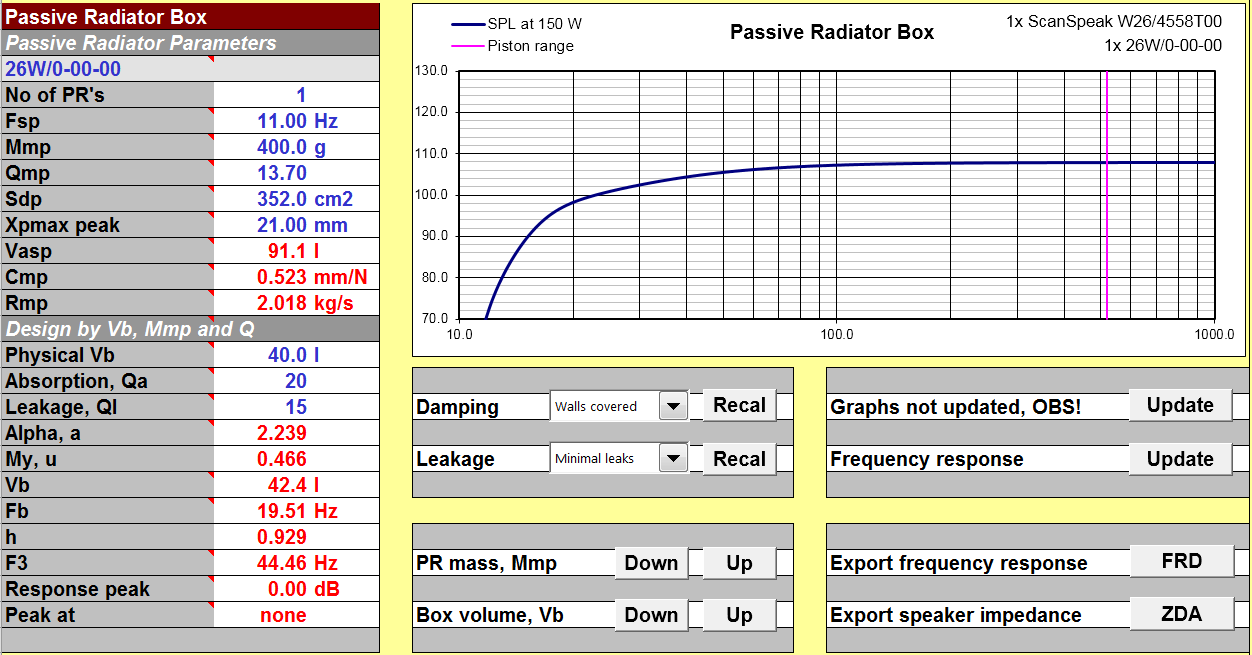
Above and below UniBox simulation of passive radiator.
As can be seen we get a Fb of ~20 Hz from these heavy weight passive
radiators.
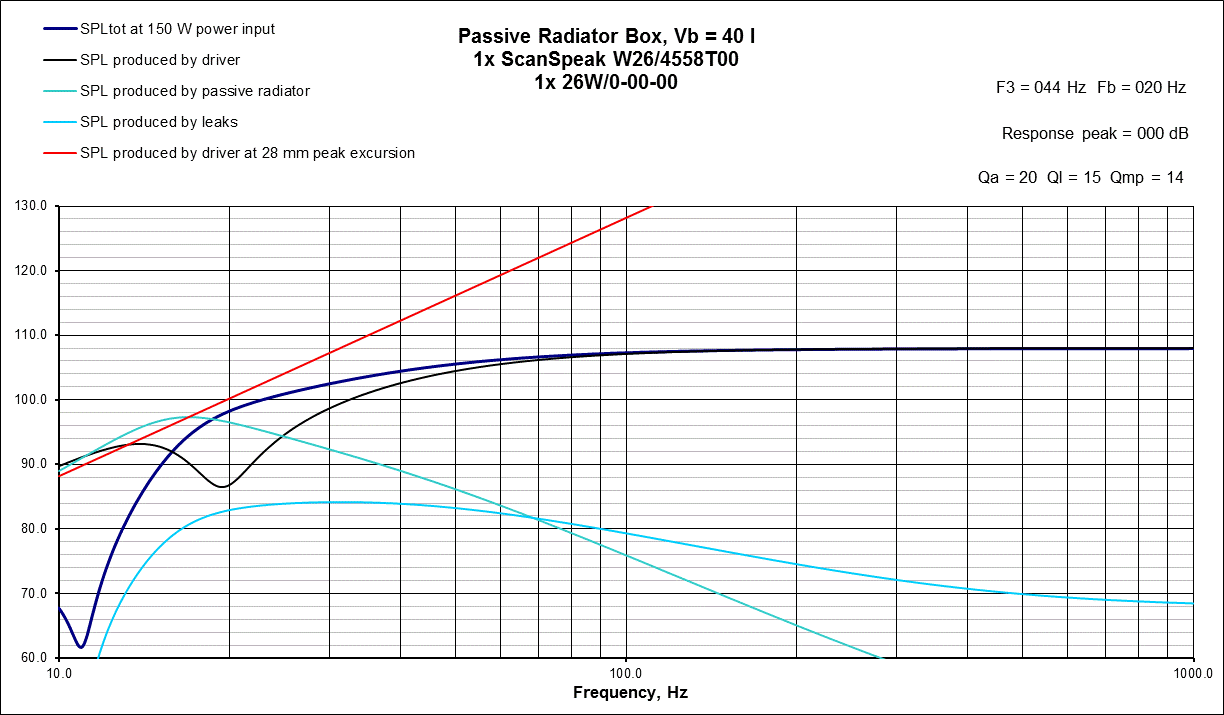
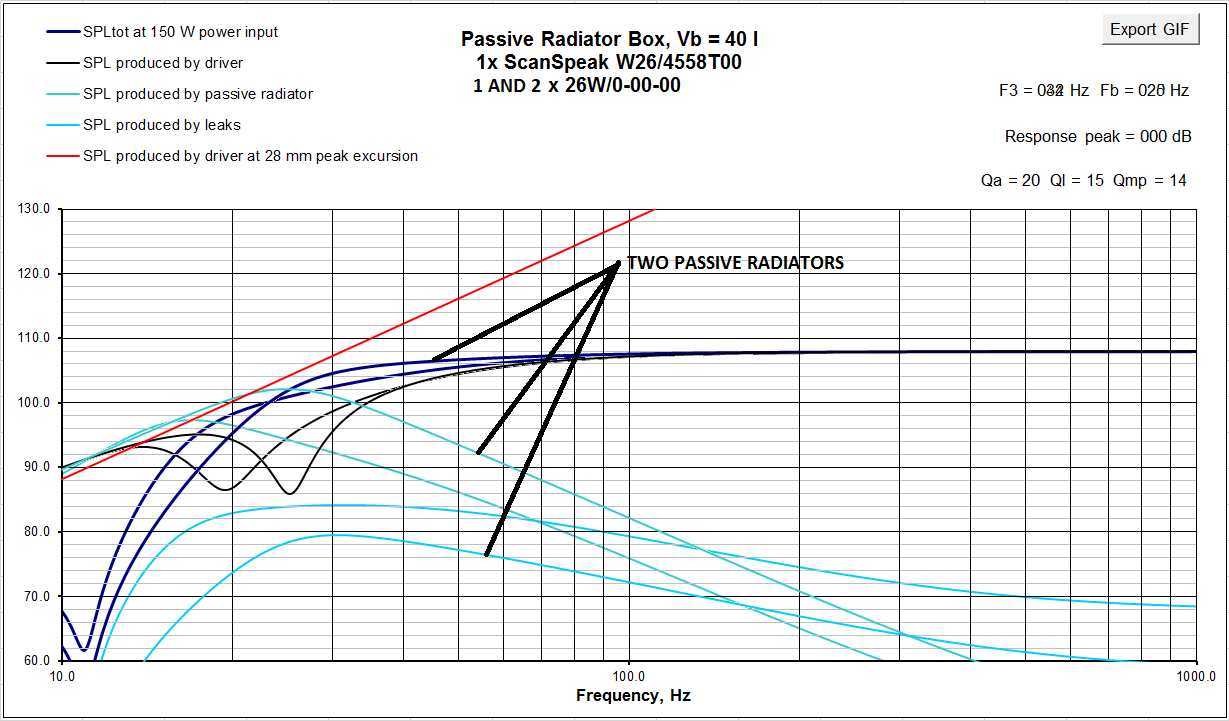
Adding a second PR looks like this.
As always: Test cabs before cutting final panels
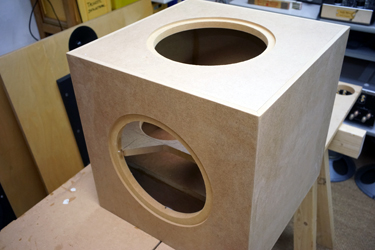
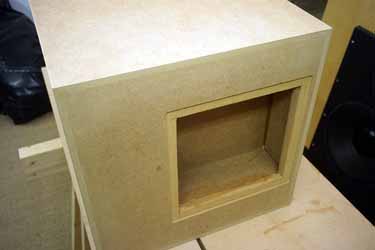
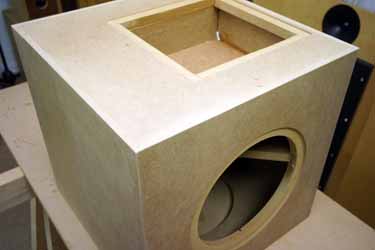
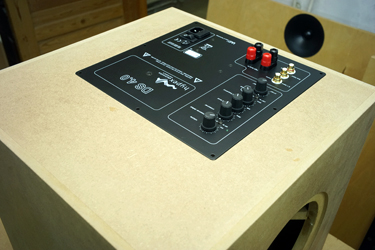
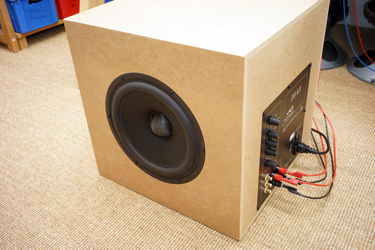
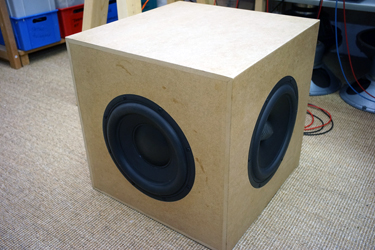
My test cab is 43 x 43 x 43 cm making a total of 57.5 litre from 22 mm MDF. The plate amp enclosure is 7 litre brutto, hence a net volume of ~50 litres minus drivers and bracing but I usually make the increase in volume from damping material make up for the volume of drivers and bracings. I used 30 mm egg crate foam on internal panels. From experiments on decreasing cabinet volume my final cabs will be 40 litres and with the 26W/0-00-00 passive radiator from ScanSpeak.

Above the speakers participating in the test, Audio Technology 3-Way
Classic, Discovery 12W and Ellam 98 mkII.
First of all: Setting up a subwoofer is anything but trivial, in
particular with the Hypex DS4 where we have the option of bass lift and
without measuring gear, it's even more
troublesome. We may take near-field measurements of the bass driver and
passive radiator and make a summation and tune the bass lift to a flat
response down to some 25 Hz, but then we place the subwoofer up against
a wall and have to do it all over again due to room-gain. Room-gain is
very much part of the equation. The good thing is that room gain is
almost linear in the range the subwoofer covers, so once tuned in for a
specific pair of satellites, we only have to deal with level.
All tests here were made from a single subwoofer placed between the
speakers about 0.75 meter from the front wall (little room gain).
First speakers on test were my Discovery 12W speakers. Small they are and my expectation was that this wouldn't work very well. I was expecting a serious lack of coherence due to the fact that the 12W doesn't move much air in the 100-200 Hz region. Trying out different points of crossover I ended up at 120 Hz, the highest point of crossover the DS4 allows. Now, there certainly is a lack of coherence in the low end but overall if lifts the performance considerably being able to hear an upright bass with some volume and some physical impact. When it comes to the overall enjoyment of listening to music the subwoofer certainly does its thing.
Next the Ellam 98 mkII. Here we have a bass driver close to twice the size of the 12W and things start sounding right. The point of crossover is lowered to some 60-70 Hz and overall coherence is significantly improved. Still, 95 cm^2 membrane area can't move air the way a 10-12" bass driver does, but adding a subwoofer we're certainly better off although the 100-200 Hz slam of bigger speakers is still missing.
The AudioTechnology 3-Way Classics feature an 8" bass driver, more than
twice the size of the Ellam midbass and the distance between the AT-3WC
and the Ellam is bigger than the distance between Ellam and Disc 12. All
of a sudden we have to deal with getting the deep bass right and all DS4
settings had to be changed. Lower point of crossover and fine-tuning of
bass lift as well. Actually the AT-3WC seems to favor 2 subwoofers as
efficiency is rather high and a single 10" bass driver runs into trouble
of not having enough output.
We need some musical source with some serious deep bass to fine-tune and
having set up the sub with some trio jazz I threw in a DALI test CD and
the subwoofer membranes were almost popping out of the speaker baskets!
That's what I mean by not overdoing the bass lift. We may use this as a
"loudness" function and all of a sudden find out we're having way too
much low-end output. If we go for a single subwoofer, I would recommend
a 12" subwoofer for the AT-3WCs.
Part II, making the final cabinets
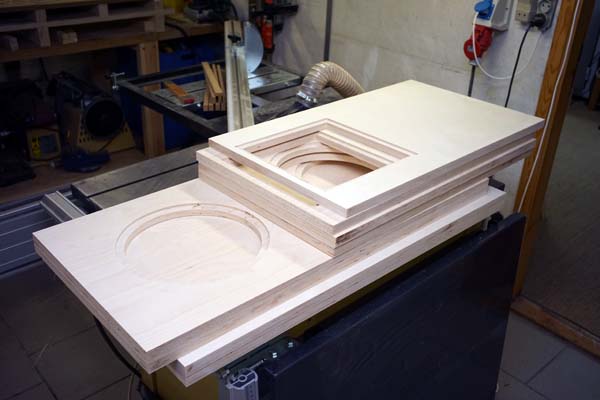
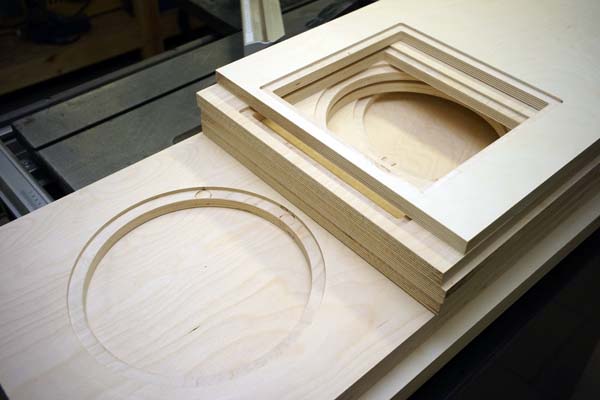
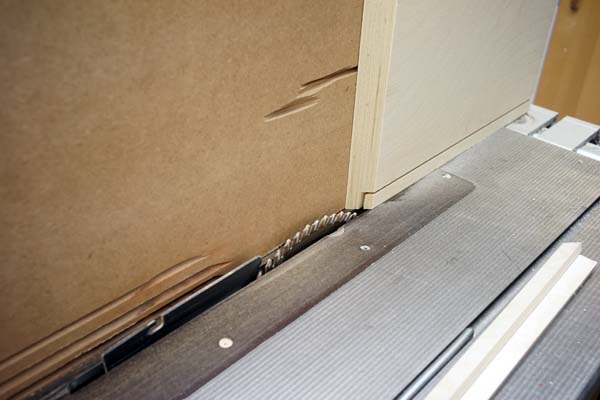
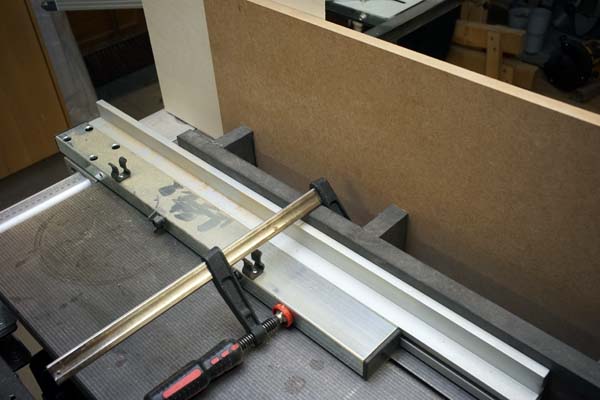
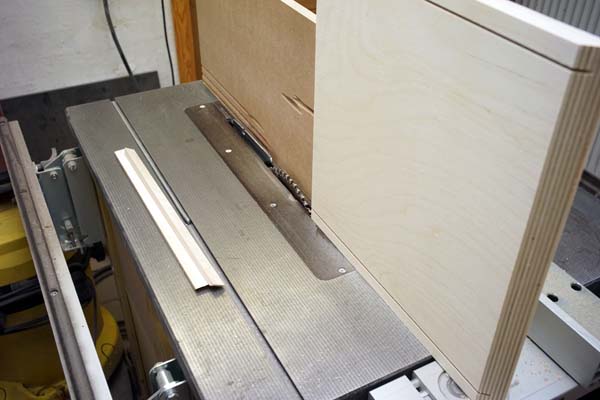
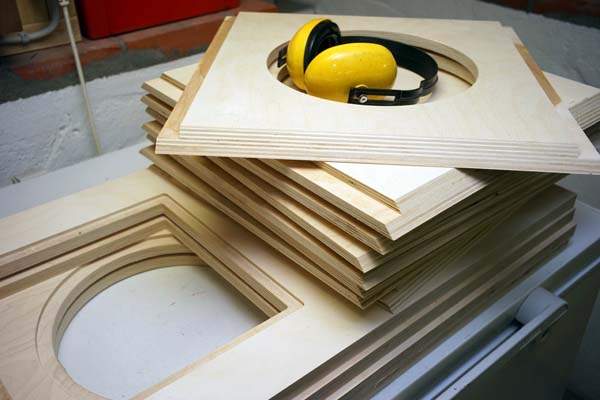
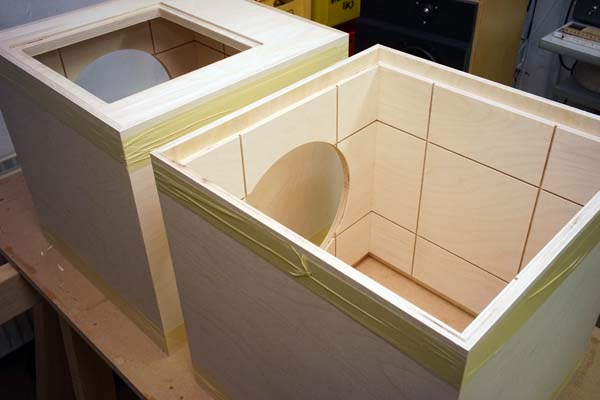
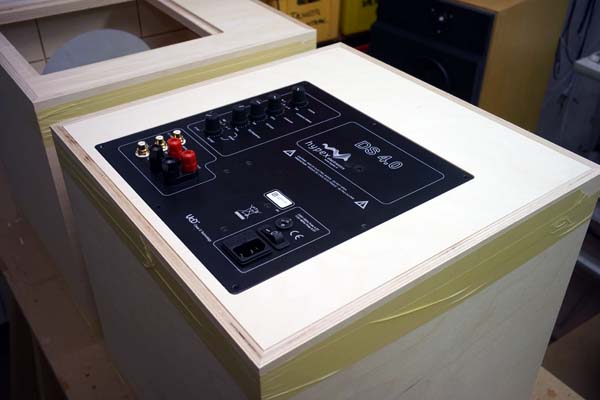
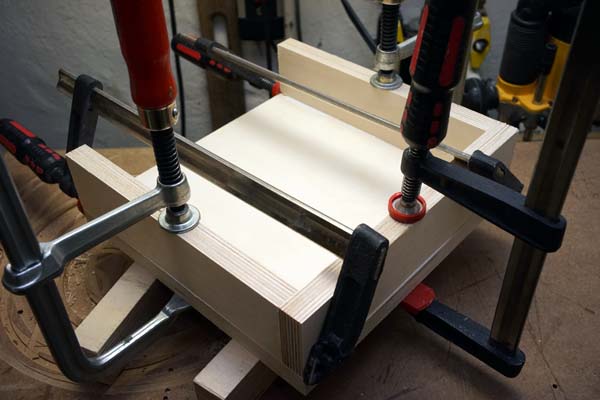
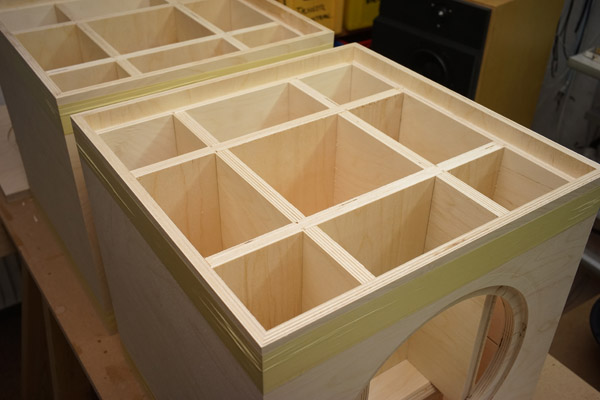
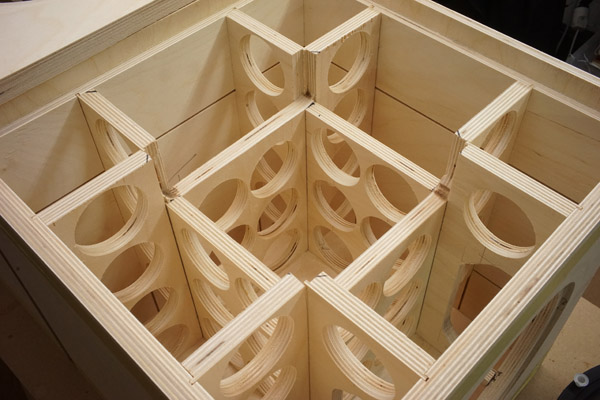
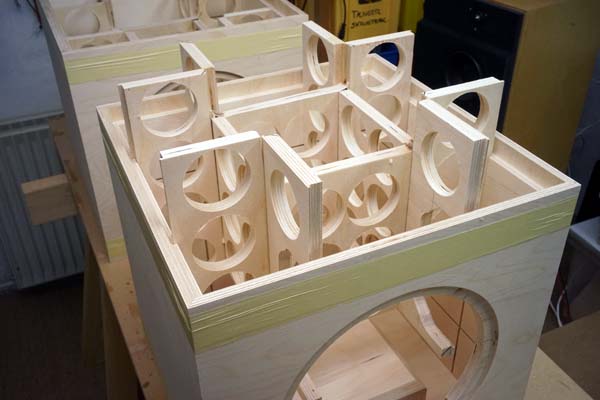
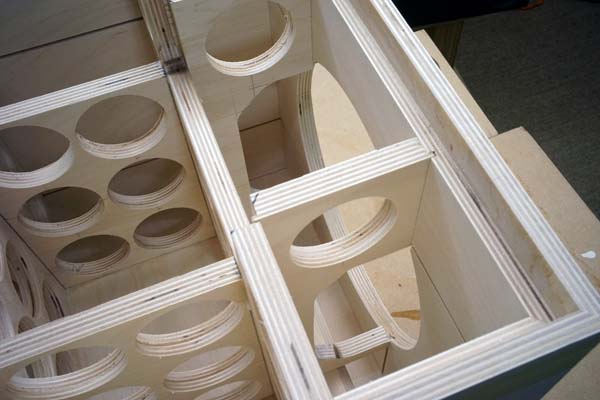
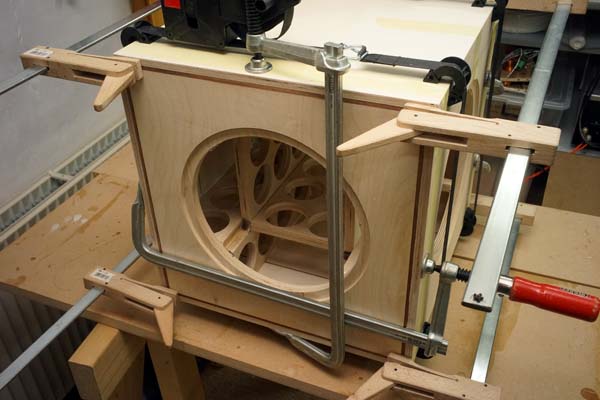
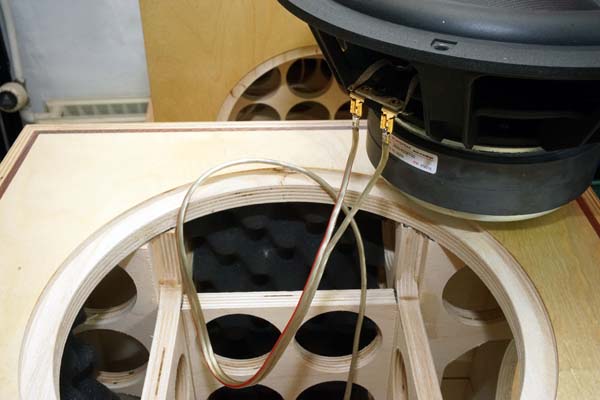
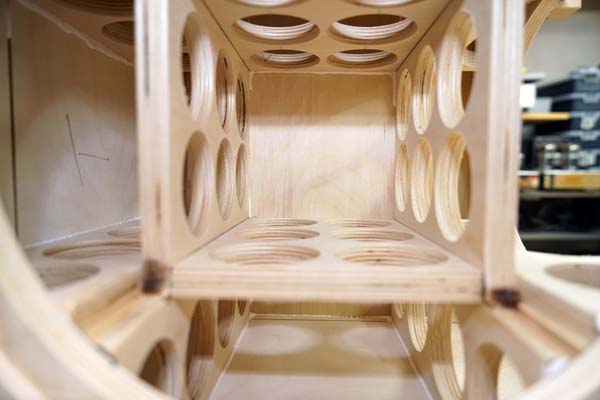
Below is shown the 4th order default software for the FA251. The 3
presets have been set to 80, 65 and 50 Hz, which should do for most
applications.
Go to
FA251/501 page for more in-depth info on programming the Hypex.
Download subwoofer software
here and place folder in your Filter Data folder in My Documents
folder.
The software contains a high-pass filter @ 15 Hz to help vinyl lovers.
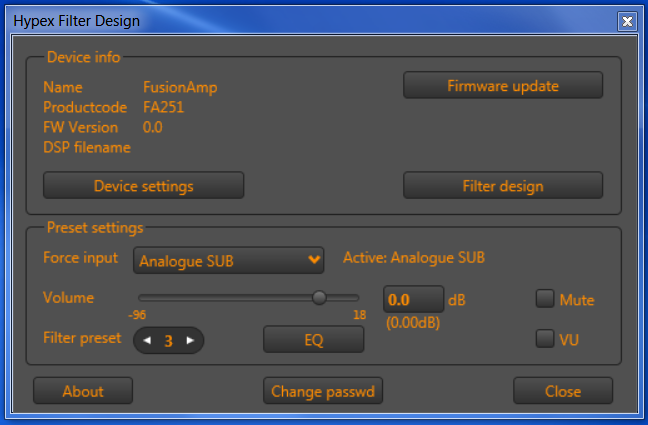
Update firmware.
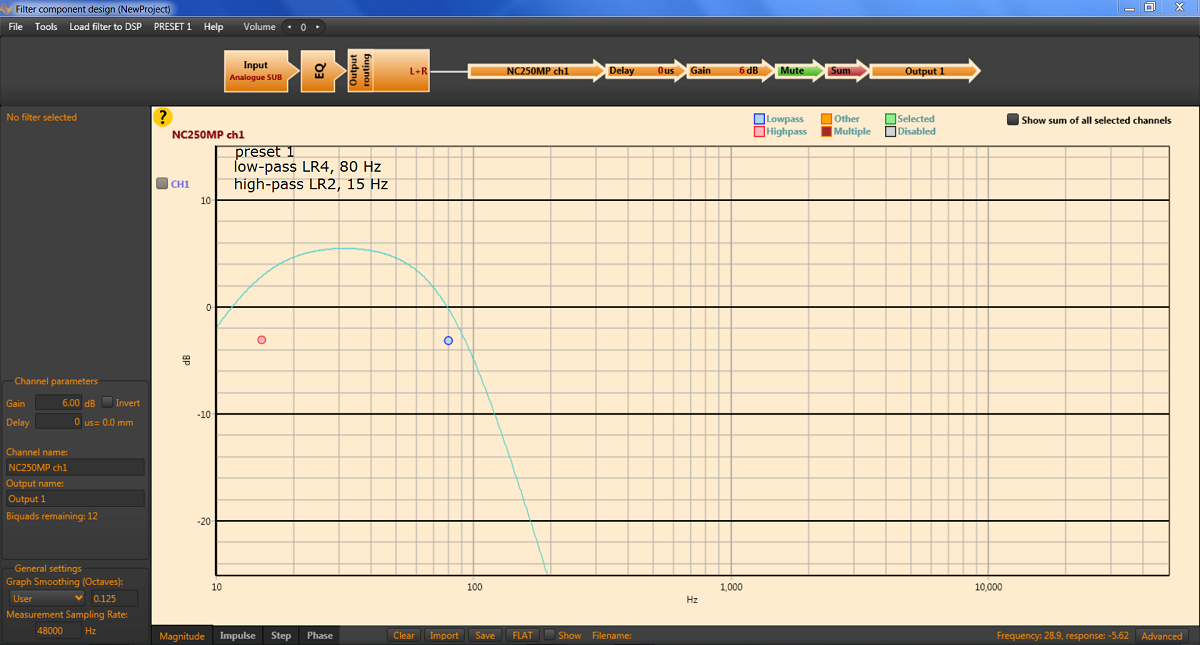
Preset 1 is LR4 @ 80 Hz.
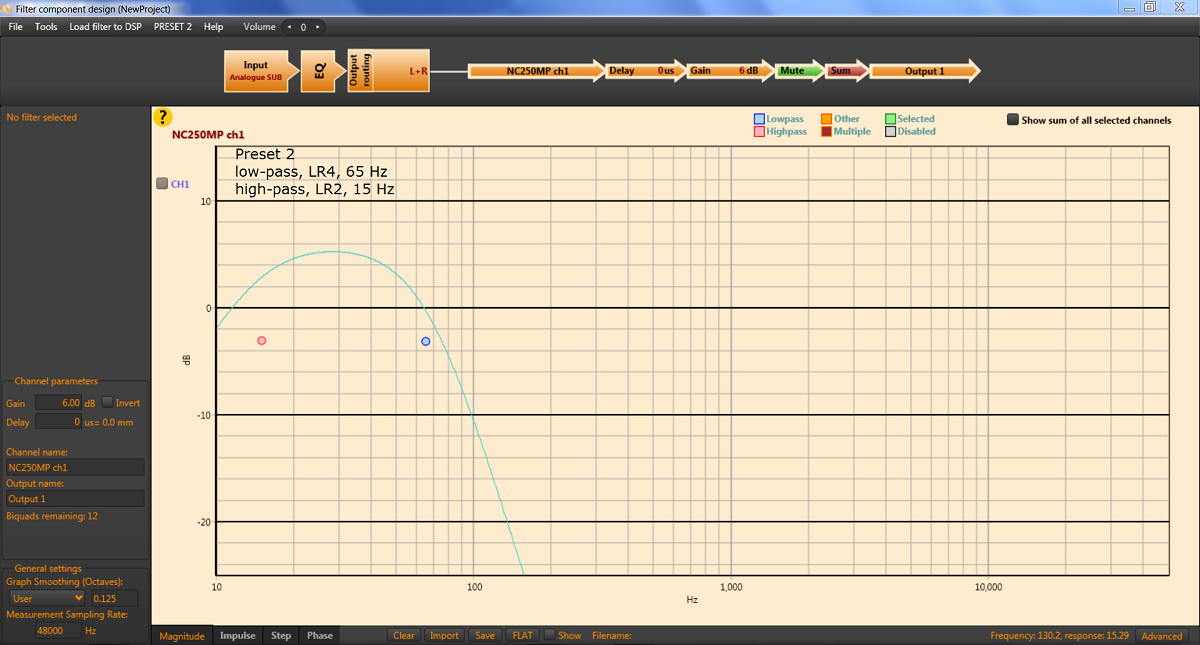
Preset 2 is LR4 @ 65 Hz.
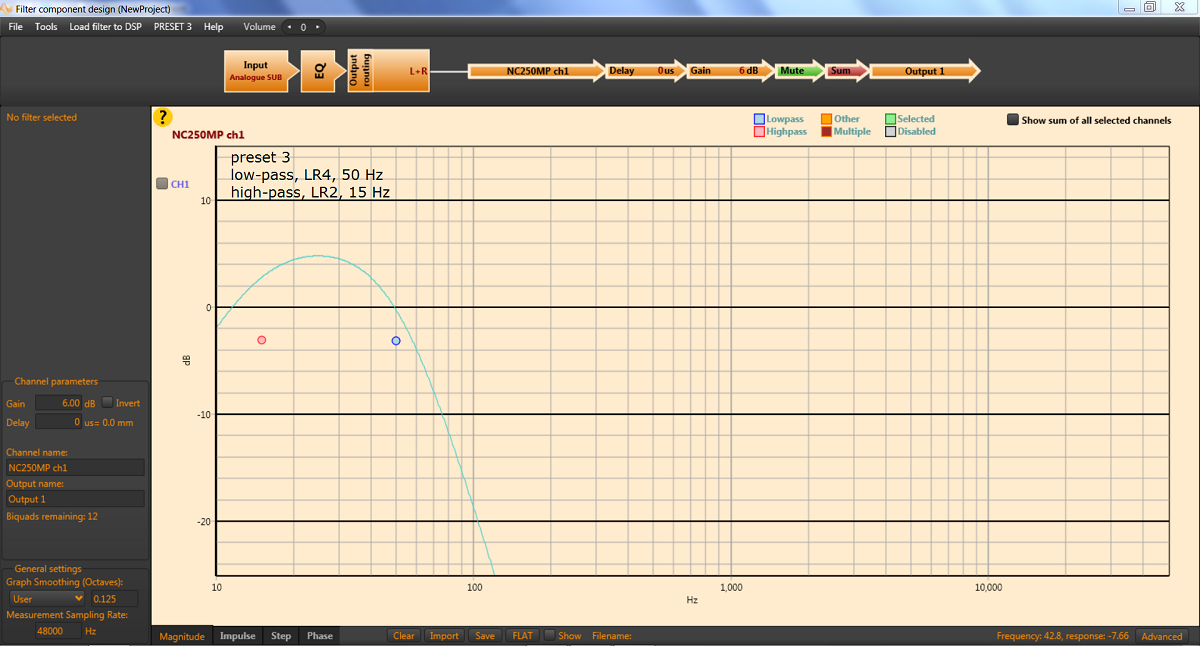
Preset 3 is LR4 @ 50 Hz.
Obviously you can change points of crossover and slopes to your liking.
12" subwoofer for
30W/4558T00 and 30W/0-00-00
A bigger version of the above would be the 12" subwoofer by expanding the cabinet to 45 x 45 x 45 cm, 20 mm panel thickness and use the Hypex FUSION FA501 plate-amp/DSP. Use the same software as for the 10" version.
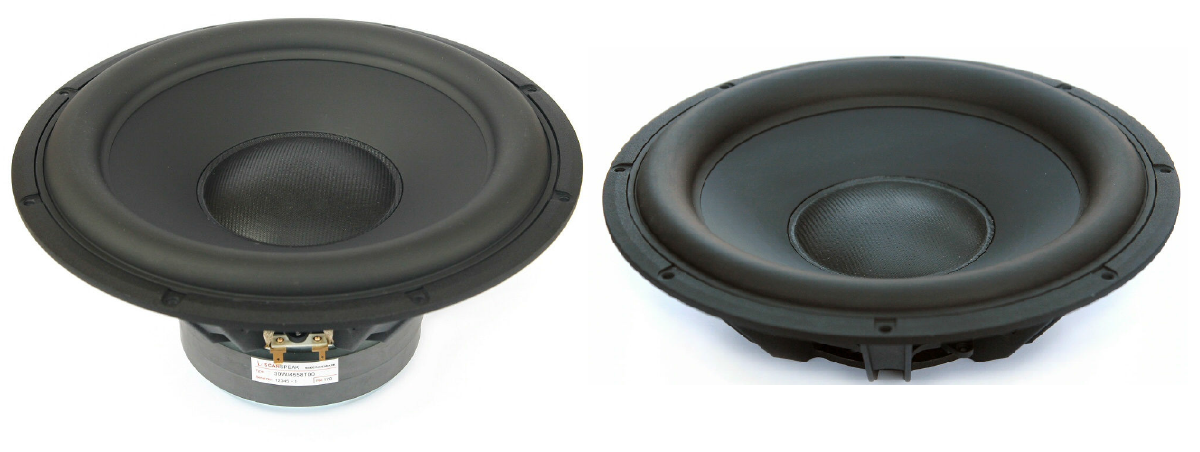
Download specs: 30W/4558T00 and 30W-0-00-00
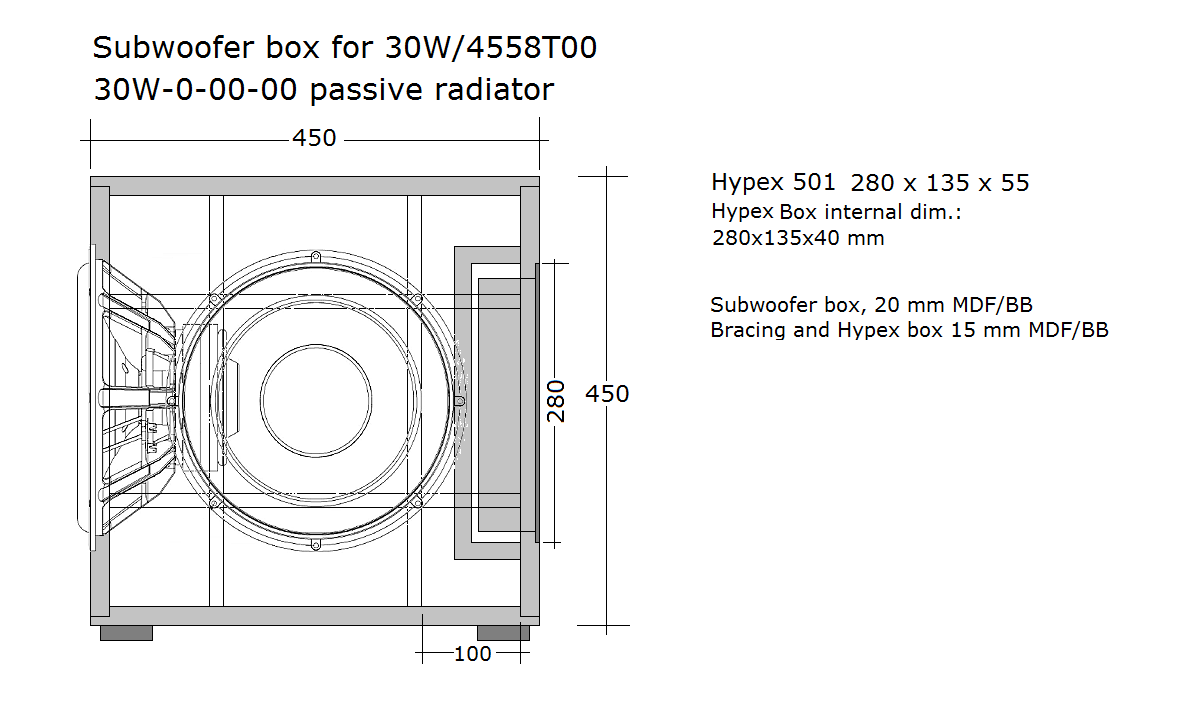
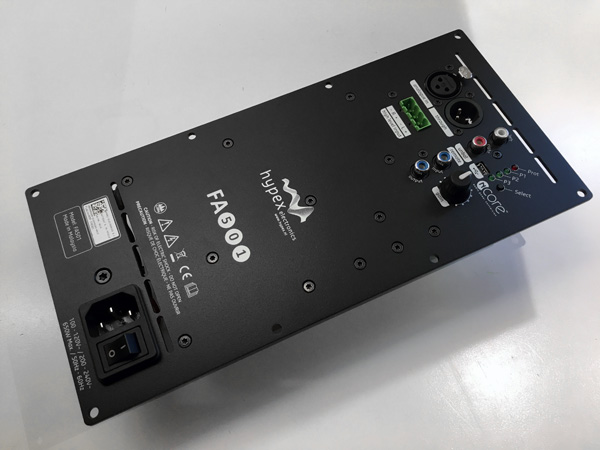
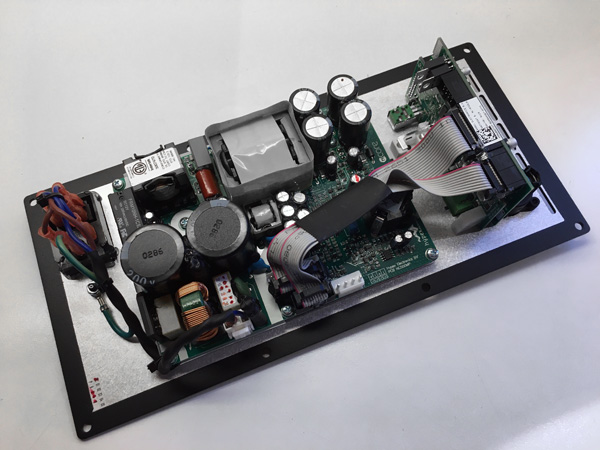
Hypex FUSION FA501 plate-amp/DSP
